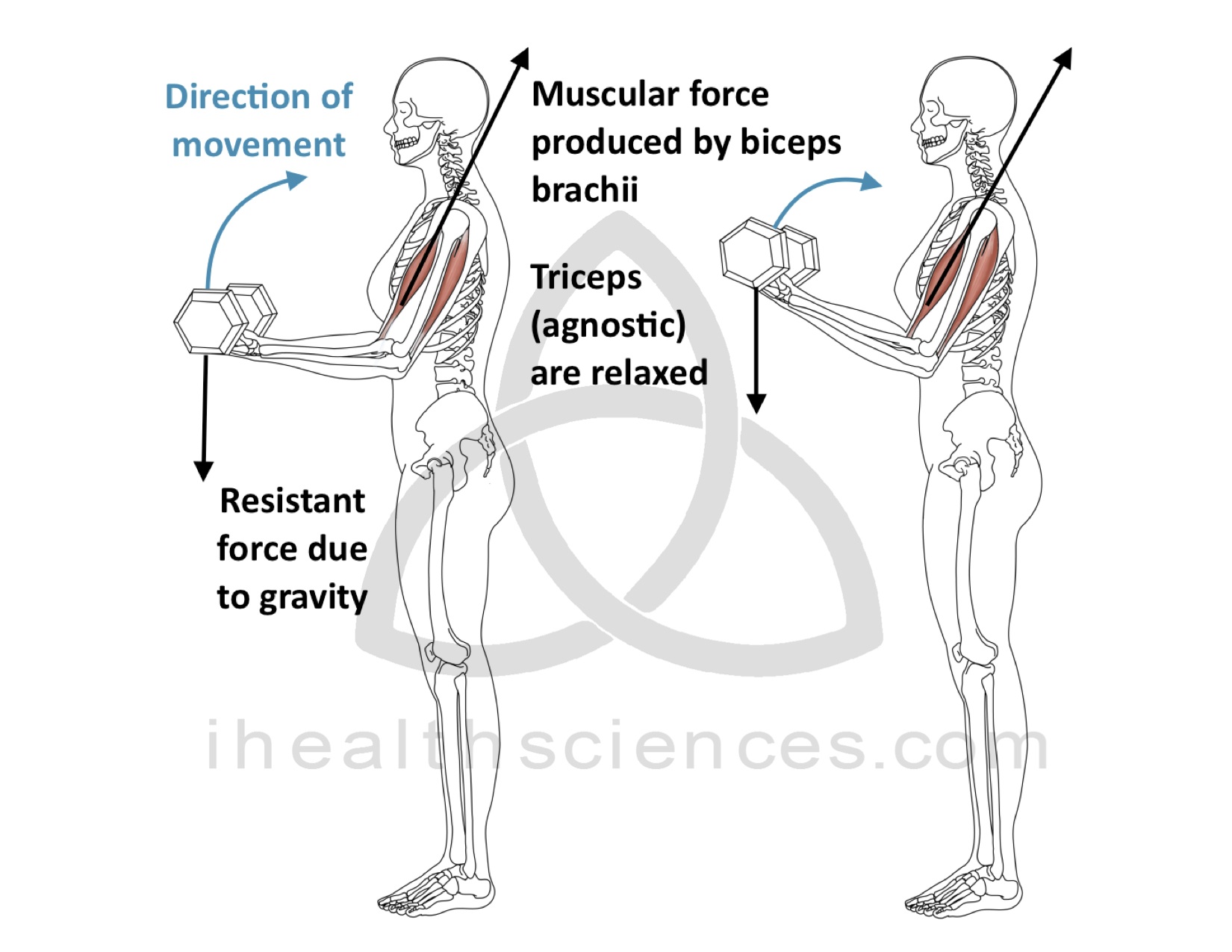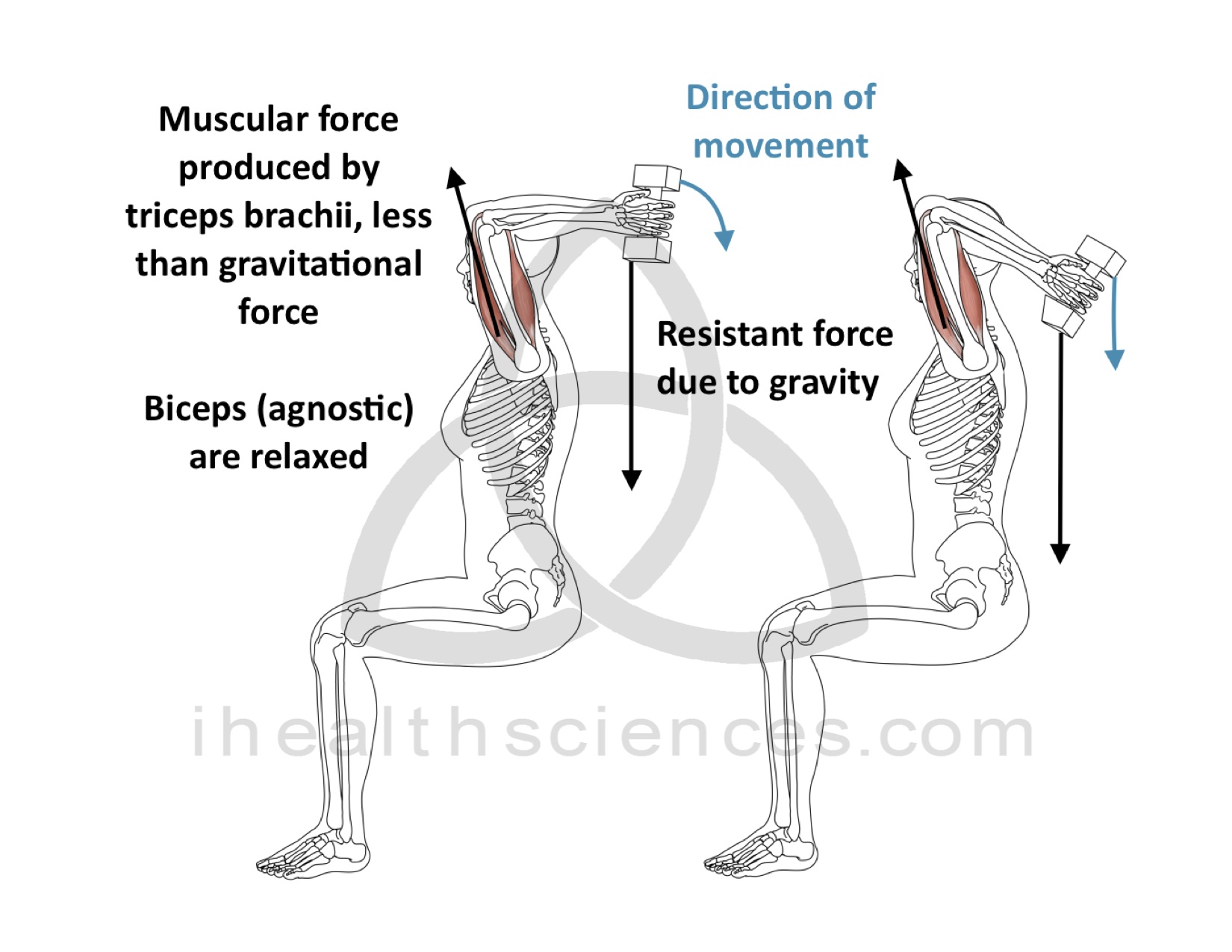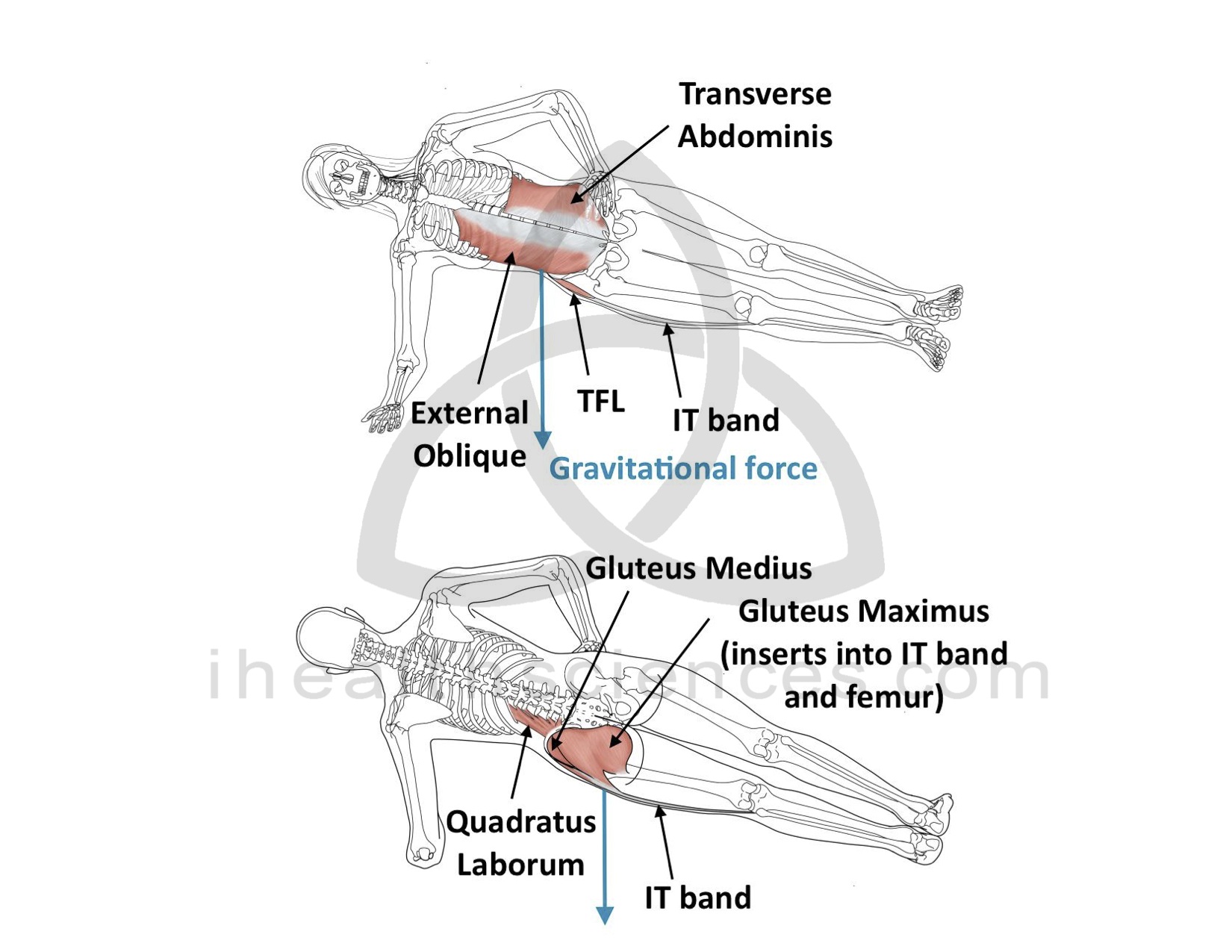Muscle Actions
Muscle actions are categorized as concentric, eccentric, or isometric depending on whether the muscle shortens, lengthens, or remains the same. The change in muscle length depends on the relationship between the strengths of the contractile force generated by the muscle and the resistant force of gravity and additional weight.
Concentric - muscle shortening
Contractile force produced by the muscle is greater than resistant, gravitational force exerted by the weight.
Examples:
Biceps Brachii: lifting phase of bicep curl
Triceps Brachii: raising phase of overhead tricep extension
Gastrocnemius and Soleus: jumping into the air
Eccentric - muscle lengthening
Contractile force produced by the muscle is less than the resistant, gravitational force coming from the weight, resulting in a slow and controlled movement of the weight in the direction of gravity. The greatest muscle force is produced during this muscle action
Examples:
Bicep Brachii: lowering phase of bicep curl
Triceps Brachii: lowering phase of overhead tricep extension
Gastrocnemius and Soleus: landing from a jump
Isometric - static, non-moving
Contractile force produced by the muscle matches the resistant, gravitational forces so that the body stays in the same position.
Examples:
During a plank: transverse abdominis, external oblique, quadratus laborum, gluteus medius, gluteus maximus, TFL, IT band
Biceps brachii when trying to pull up on an immovable bar
Triceps brachii when trying to pull open a locked door





